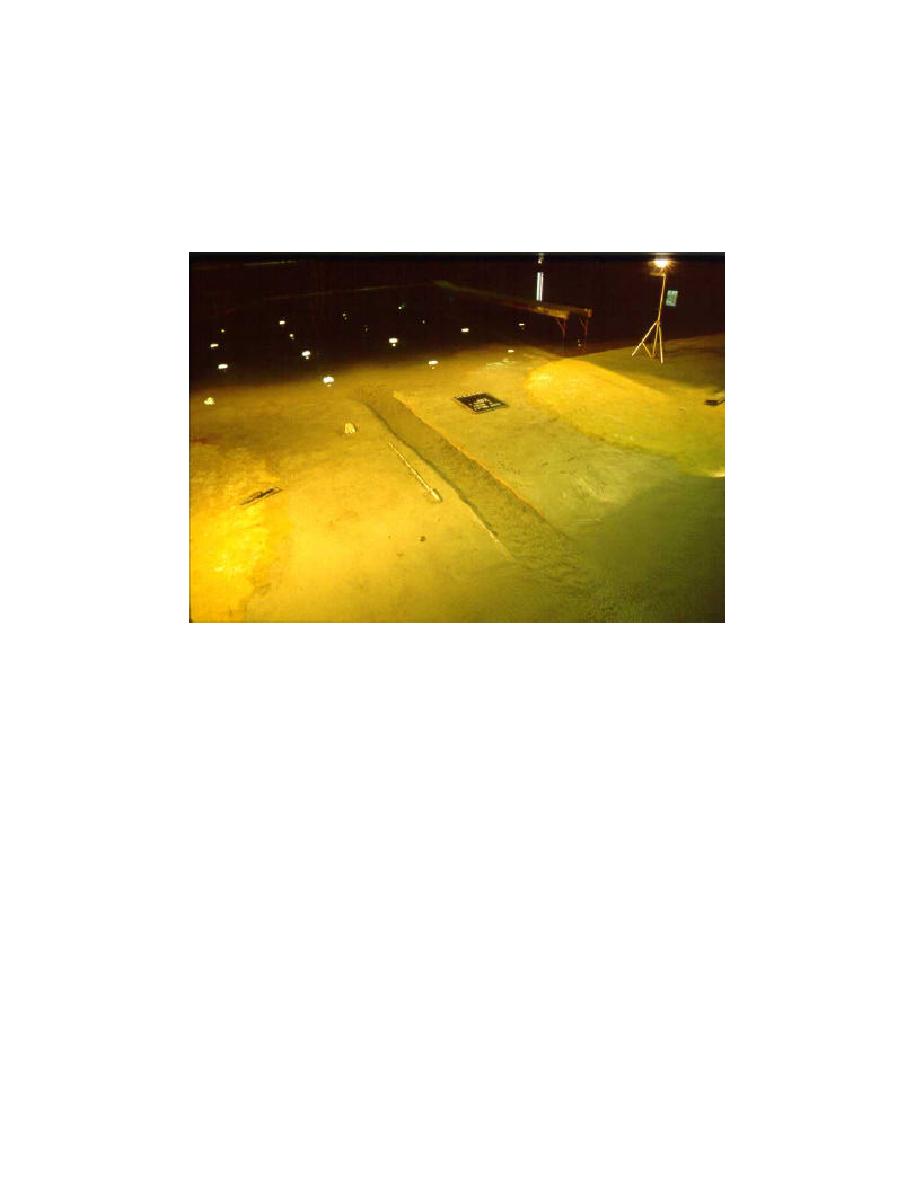
depth of 0.03 m (0.1 ft) and width of 0.3 m (1 ft) was carved in the sand from
ocean to bay (Figure 5). One tidal cycle was run. Bay tide range was measured to
be 10 percent of ocean range. The channel area was near or just greater than un-
stable equilibrium indicating it would most likely close, and the length/minimum
area combination was judged to produce too much inlet choking. There was
minimal response in the channel area.
Figure 5.
Initial inlet channel at start of Run 1
Run 2
The inlet initial area was increased by mechanically deepening to 6.1 cm
(0.2 ft). After 2.5 tide cycles the inlet minimum area was not appreciably chang-
ing. Maximum current had fallen to 22 cm/sec, and sediment movement was de-
creasing. The channel length/minimum area combination still created a strongly
friction dominated inlet.
Run 3
The inlet channel was widened mechanically, and tide plus waves were run.
Appreciable currents were maintained in the channel (39 cm/sec). It was judged
that appropriate initial conditions were obtained.
13
Chapter 4 Experiments and Results



 Previous Page
Previous Page
